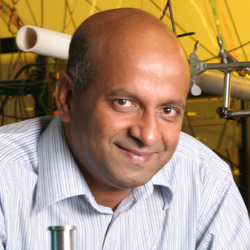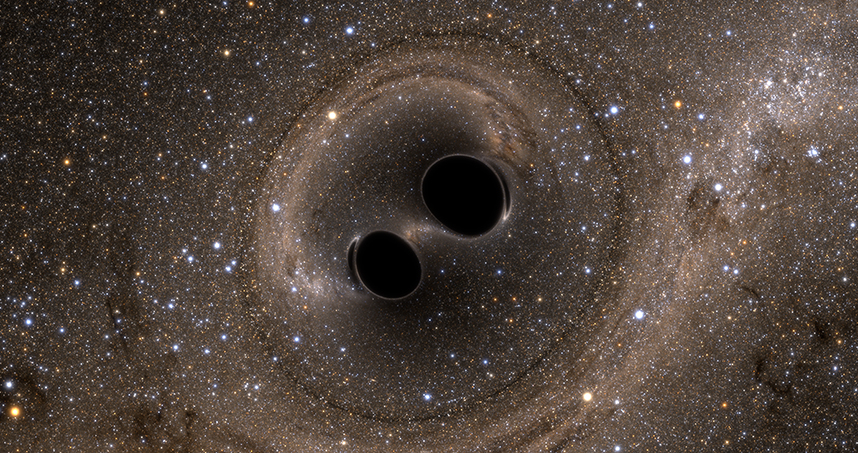Selim Shahriar Contributes to Discovery of Gravitational Waves
Shahriar is working to improve the detectors’ sensitivity by a factor of 20
At 5:51 a.m. on September 14, 2015, two L-shaped antennas located on opposite sides of the United States blipped out of place. The displacement lasted just 0.2 seconds and moved a distance that is 1,000 times smaller than a proton. But this tiny event carried an enormous amount of information about the birth and nature of the universe.
The event confirms the existence of gravitational waves, a major prediction of Albert Einstein’s 1915 theory of general relativity.
“When Einstein first came up with this idea, it was unimaginable that we would ever be able to measure such a small change,” said Northwestern Engineering’s Selim Shahriar. “We’re talking about a difference so small that it’s incredible that people can even think about measuring it now.”
 Shahriar, professor of electrical engineering and computer science at Northwestern’s McCormick School of Engineering, was a part of the team that made this seemingly impossible measurement possible. He leads the experimental portion of Northwestern University’s chapter of the LIGO (Laser Interferometer Gravitational-Wave Observatory) Scientific Collaboration, the international consortium that made the groundbreaking discovery.
Shahriar, professor of electrical engineering and computer science at Northwestern’s McCormick School of Engineering, was a part of the team that made this seemingly impossible measurement possible. He leads the experimental portion of Northwestern University’s chapter of the LIGO (Laser Interferometer Gravitational-Wave Observatory) Scientific Collaboration, the international consortium that made the groundbreaking discovery.
Gravitational waves are ripples in the fabric of spacetime. Physicists have concluded that the detected gravitational waves were produced during the final fraction of a second of the merging of two black holes located 1.3 billion light years away from Earth.
Shahriar searches for ways to improve the sensitivity of the LIGO detectors and broaden the spectrum over which the detectors are sensitive. His group has identified a technique that improves sensitivity by a factor of nearly 20, a tweak could allow the instrument to probe a volume that is about 8,000 times larger than is now possible. Implementation of Shahriar’s technique would enable the detection of a much larger number of events in a given period.
Shahriar is also working on a second technique that uses atomic clocks — in the form of artificial pulsars — that are placed on other planets and celestial bodies to enable the detection of gravitational waves in a different and very important part of the spectrum.
Up until now, astronomers have only been able to explore the universe using light. Detecting gravitational waves gives them another tool for astronomical exploration that could potentially reveal what happened within the very moments that the universe was born.
“In the first few seconds after the Big Bang, the universe was so dense that light could not escape,” Shahriar said. “So we cannot look at something that happened in the first few seconds by looking at light. Then we have to look at something not produced by light. And that is gravitational waves.”
Read more about Northwestern's involvement in the discovery.
